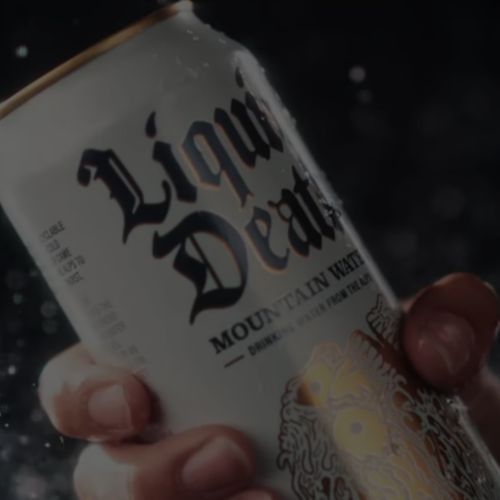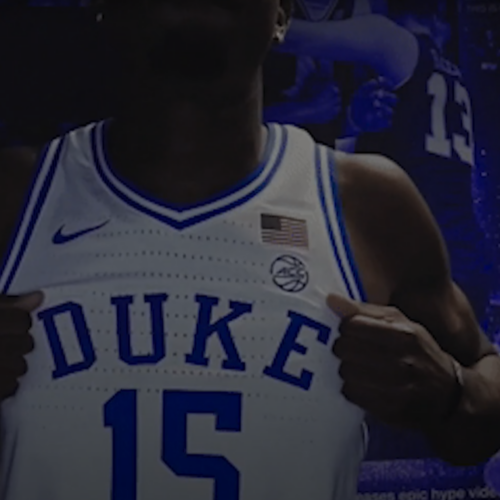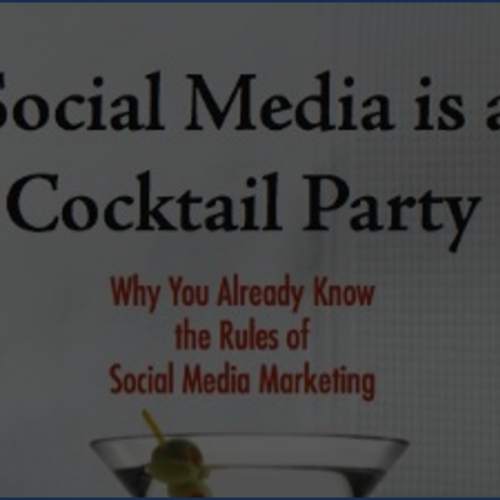28 Jun 47 Outrageous Viral Marketing Examples over the Last Decade
Over the course of the last decade, an array of viral marketing examples have come and gone with varying degrees of success. Though the term “viral” infers that the campaign is organic and self-replicating, marketers and big-name brands have begun to attempt manufacturing viral content in the hopes of increasing their brand awareness or product sales. Some feel that viral content cannot be manufactured and is only the product of organic and unpredictable forces, while a growing number of others feel that they can predict what people will be interested in, how they will share that content, and ultimately what will become viral. Though the debate rages on, the fact remains that viral marketing has evolved over the course of the last decade from a rather obscure Internet phenomenon to a massive, multi-million dollar marketing tool employed by agencies and brands the world over. With that said, let’s explore some of the better examples of viral marketing in the last decade.
Special Note:

Though I know that we are looking at a decade of viral marketing, a look back at the history of online marketing efforts must include Hotmail. In 1996, Hotmail was a particulary unique email service in that it was free, could be accessed anywhere, and would allow the user to have multiple accounts. One of the interesting things Hotmail did was it would attach the message “Get your free email at Hotmail” at the bottom of every email sent by a Hotmail user. Once the receiving user clicked on the word “Hotmail” they were taken to Hotmail’s homepage where the free email service was further explained. The plan, original at the time, worked. By 1998, Hotmail had accumulated 12 million subscribers. Hotmail eventually sold to Microsoft for a cool $400 million. Not bad!
1999
The Blair Witch Project was released on July 14, 1999. The film cost a about $350,000 to produce and went on to gross nearly $250 million worldwide, giving it the highest profit-to-cost ratio of any film in history. The incredible success of the film could be attributed to its unique website that effectively blurred the lines between fact and fiction. The website, that still exists today, spoke convincingly of the mythology behind the Blair Witch, contained a realistic photo of the three filmmakers/stars with a caption that the photo was taken “less than a week before their disappearance,” along with a sideshow of other rather generic, yet real photos that made many believe that this site was actually authentic. The gimmick worked!
2000
This was one of a series of ads by John West Salmon that appeared on the Internet in late 2000. Since their groundbreaking debut, the “Bear Fight” videos have gone on to attract an astonishing 300 million Internet views according to the BBC, and it is not difficult to see why. It’s hand-held, low budget, realistic feel would become synonymous with the term “viral” for years to come.
2001
BMW
BMW launched a series of eight high-cost, high-production short films released on BMW’s website. The films were produced and directed by such acclaimed filmmakers as David Fincher and Guy Richie and starred actors such as Don Cheadle, Clive Owen, and even Madonna. Within the first four months of release, the films attracted over 11 million views and sent BMW sells up 12% in 2001 alone. The success of the BMW series has prompted many other car manufacturers such as Nissan to adopt a similar internet-based strategy.
2002
It is not difficult to see how this glossy ad by risque lingerie brand Agent Provocateur became an Internet sensation. At the height of her global career comeback, Australian pop star Kylie Minogue left little to the imagination in this salacious, yet effective promotional stunt.
XBox’s shocking and provocative 2002 ad raised eyebrows across Europe when it appeared on the web. The ad has been described as “graphic,” “disturbing,” and even “morbid” by some; “interesting” and “innovative” by others. Whatever the proper description, Microsoft continues to generate buzz around the world for this pithy ad.
2002 FIFA World Cup

During the 2002 World Cup, a doctored photo appeared on the cover of the British newspaper “The Mirror.” The photo depicted members of the Argentinian defense with women’s handbags in front of a goal. The photo instantly made the rounds on the Internet, ultimately becoming one of the most shared photos of all time. Though the stunt was not a direct marketing ploy of the FIFA World Cup establishment, the shared photo helped to further heighten the already global prestige of the event.
Kraft

In an effort to build up their online presence, Kraft launched a branded microsite called “Cheesy Movies.” The site, which corresponded with Kraft’s much larger back-to-school promotions, allowed participants to create an account and develop their own animated movies up to 25 seconds long. The short films featured an array of different props and characters for participants to work with and manipulate. The microsite was a hit with both kids and parents. Thousands of movies were created with each participant spending on average between 30 minutes and an hour on the site.
Swedish furniture magnate Ikea released this surprisingly scandalous ad to the Internet with the intent of promoting their new line of storage products. Marketers wanted to make sure that customers didn’t leave, ahem, personal items lying around the house, lest it fall into the wrong hands. Better “tidy up.”
2003
Trojan Condoms launched a website called Trojan Games in 2003 which followed a series of Olympic-styles events based on sexual performance. The various Trojan Games videos have been viewed over 300 million times and have helped to, ahem, “stimulate” public discussion about the brand.
2004
The Subservient Chicken for Burger King was introduced in 2004. The branded micro site consisted of an interactive web cam that filmed a person dressed in a chicken costume who would perform certain acts the user typed into the site. Users flocked to the site in droves, accumulating more than 15 million visits in the first 5 days. Today, the site has attracted over 450 million hits; however, that does not mean that it has been a success. The provocative, yet creepy site is amusing and a great way to waste time, but does it really make Burger King’s soggy fries taste any better? Does it make the fast food chain hip and edgy, or shady and desperate? I think a little of both.
2005
The Australian beer company, Carlton Draught, wanted to produce an ad that would grab the attention of the world. The result: “The Big Ad.” The ad went viral, forcing the beer company to scale back its broadcast television ambitions due to risk of over-exposure. Within 24 hours of its release, the ad attracted more than 162,000 views, and after two weeks it had garnered over one million views.
The Berlitz Language School hoped to raise its company profile by releasing a series of humorous yet simple ads to the Internet. Their efforts generated an international windfall of attention that has helped to place the often-controversial school as a leading second-language learning institution.
2006
Smirnoff wanted to play off of its preppy reputation to promote the launch of Raw Tea, a new line of alcoholic malt beverages. To do this, they released a music video called “Tea Partay” to the product’s microsite. The video eventually made it over to YouTube where it has attracted nearly 5 million views. The popularity of the video inspired the marketers at Smirnoff to expand Raw Tea’s website to include follow-up videos and online contests in order to make the site more interactive.
Nike has become a master of viral marketing over the years, but this 2006 ad staring Brazilian soccer superstar Ronaldinho has emerged as one of the greatest viral ads of all time. The “is it real, or is it doctored” quality of the ad caused many viewers to send the clip to friends to get a second opinion on whether the feat was real or computer generated. As of today, the amateur-looking clip has generated more than 30 million views on YouTube and positioned itself as one of the most successful and acclaimed viral ads of all time.
This ad by Dove entitled “Evolution” was one of the first of a series of self-esteem related ads released to the Internet. The short 75-second clip generated more than 44,000 views within its first day of release, more than 1,700,000 views with the first month, and more than 12,000,000 views within the first year. The ad is especially noted for the amount of discussion it generated on such broadcast television shows as “The View,” “Good Morning America,” and “The Ellen DeGeneres Show.” It has been estimated that the clip has generated more than $150 million worth of “free advertising” due to its mainstream exposure. It is emotional, clean, beautiful, and considered by many to be a classic.
Ecko clothing brand released this video in support of the company’s “Still Free” campaign. Again, the success of this video was in large part due to the “did they or didn’t they” debate the clip generated. The “under-cover” ad made even the United States Air Force publicly question whether or not the group who shot the clip did, in fact, breach security at Andrews AFB and spray graffiti along the left wing engine of Air Force One. Though the stunt turned out to be a hoax, the “did they or didn’t they” debates swirling around the incident transformed the “Still Free” slogan from a mere tag line into a national news headline.
Philips pushed the envelop of decency with their Shave Everywhere site that promoted Bodygroom, a new product by Philips. The site and its accompanying video ad made light of a very, shall we say, uncomfortable topic for men to discuss. The campaign generated millions of views and visits to the Shave Everywhere site and has given the electronics company an unexpectedly “edgy” persona. The “Tell a Friend” feature on the bottom right hand corner of the site was particularly useful in helping the campaign make the Internet rounds.
Pure talent. That is literally all it took to make GuitarMasterPro.net, a somewhat obscure online guitar lesson service, become an international sensation. In 2006, the company released this poorly produced, seemingly uncreative video of one its students playing an electric guitar version of “Pachelbel’s Canon.” The talent of the 21-year-old prompted an international video sharing bonanza that has resulted in more than 60 million views on YouTube; hence, becoming one of the site’s most-viewed submissions. The young guitarist said simply in his description box on YouTube, “I learned to play guitar with GuitarMasterPro.net.” Now that’s proof!
The ad features scantily-clad women, automobile racing, shaky camera work, and a touch of intrigue. Though the ad is obviously contrived and not particularly interesting or shocking (and waaayyyy too long), it still manages to make a tax company seem mildly interesting to some – a feat unto itself. The spot has gained nation-wide attention, nearly 200,000 views on YouTube, and been featured on ESPN, CNN Headline News, NBC’s Today, SportsIllustrated.com, and Sportingnews.com.
The title alone screams viral. The b-movie concept attracted instant attention throughout the web once the general plot of the film was made public. The title and eventual trailer inspired countless mock-trailers, spin-off websites, and YouTube-broadcast parodies. Everyone talked about Snakes on a Plane, but then no one went to see it. The much-hyped film was a box office dud. The lesson here – even if a great viral campaign takes off, the product being sold must also be interesting. Maybe Burger King should take note!
Utah-based company, Blendtec, began distributing a series of infomercials under the title “Will it Blend?”. In the brief segments, the company’s co-founder, Tom Dickson, blends an assortment of items including golf balls, marbles, and cell phones to demonstrate the strength and durability of his blenders. The “cheesy” infomercials became an instant sensation garnering more then 100 million online views between the Blendtec website and YouTube. Since the launch of these videos, Blendtec has seen an “exponential increase in sales” including a five fold increase in online revenue.
Jack Links Beef Jerky struck online gold with the release of a series of YouTube videos entitled “Messin’ with Sasquatch.” The clips follow the exploits of people traveling through the woods who eventually run across the mysterious Sasquatch and proceed to “mess” with him. The videos were a viral sensation on YouTube that led many potential customers to the company’s equally entertaining website. The site contains a link that allows the user to “explore the Sasquatch’s world” as well as an extraordinarily elaborate microsite, livingsasquatch.com, that allows the user to create their own digital Sasquatch film.
2007
To promote their concept album “Year Zero,” US rock group Nine Inch Nails released a rather mysterious t-shirt with the phrase “I am trying to believe.” The phrase was a registered URL that connected to other websites that described a dystopian world based in the year 0000. These sites ultimately led users to an original alternate reality game (ARG) chronicling the year 2022, when America was “reborn” and year O occurs. The game consisted of a series of websites, phone numbers, emails, videos, MP3s, murals, and other media that expanded upon the storyline woven through the album. The album went on to sell nearly 200,000 copies within the first week, peaking at #2 on the Billboard charts.
In early 2007, Quiksilver released a video to the Internet that featured a group of kids in a non-specified European location throwing dynamite into a river and then surfing the manufactured wave. Though the ad turned out to be a fake, the realism and “explosive” nature of the stunt caused more than 10 million viewers globally to flock to the 80-second video clip within the first month of its release. What is most interesting about this viral stunt is that the logo and company name both appear at the end of the ad. It is clear that this is an ad of some sort, is connected to Quiksilver, and is probably a fake. However, the clip still generated a ton of buzz among the very skeptical YouTube generation.
In contrast to my previous pick, the Diet Coke and Mentos Experiment was a viral sensation produced completely independent of either the Coke or Mentos brands. Though “the exploding Cokes” had already been an online phenomenon well before 2007, the release of the “Diet Coke and Mentos Experiment” helped to generate more than 10 million YouTube views and raise the profile of the experiment beyond just a passing fad and into the annals of Internet lore. Both Coke and Mentos gained a considerable amount of brand awareness from the clip that has emerged as one of the most iconic viral sensations of the past decade.
The “Whopper Freakout” ads again played off of the the typical YouTube memes of grainy video, amaturish feel, and hidden camera quality to illustrate how people would react if the Whopper, the signature offering at Burger King, was removed from the menu. The ads insist that the customers are “real” and the reactions are “authentic,” but they certainly appear to be VERY staged. The campaign would be more interesting if the reactions were convincing. Everything seems either under-cooked, over-cooked, or just plain forced. However, with a slow, but steady increase in sales following the campaign, who am I to judge?
One of the WWE’s biggest stars, Chris Jericho, left the WWE in 2005 in dramatic fashion. For two years, there was rabid speculation that he would return to the ring, but when and how? To tap into this chatter, the WWE began releasing a series of brief 15-second videos to the Internet containing cryptic binary code hinting at the wrestler’s return.The cryptic messages ignited the blogosphere as fans attempted to decode the videos. The hype led up to Jericho’s eventual return In November 2007, an event that generated huge ratings for the USA network as well as helping Jericho himself become a cross-over celebrity outside the ring.
Cadbury’s wildly popular “Gorilla” campaign is solid evidence that clever advertising can create short memories. At the start of 2007, Cadbury was in the midst of a PR nightmare after a major Salmonella outbreak that occured at one of Cadbury’s factories. Then, in 2007, Cadbury launched its “Gorilla” campaign to reignite interest in the company. The ad was a huge success on broadcast television and instantly made its way to the web. After its first week on Youtube, the clip received over 500,000 views. By the end of 2007, the clip had been viewed over 6 million times online. Approximately 70 Facebook groups have been created celebrating the campaign, as well as a host of parodies and spin-offs. Following the release of the campaign, YouGov reported that 20% more people looked favorably on the brand than before. The campaign’s viral presence helped to increase sales around the world from Britain, to South Africa, to Australia and New Zealand.
In a bid to boost sales of season tickets for the club’s soccer team, Sporting Portugal set up a microsite for customers interested in purchasing tickets. The site requested that the user enter his/her name and phone number. Once the user did this, the screen would change to a video of the soccer team and coach apparently in the midst of a pep talk. The coach would then stop, call the user who just entered his/her information, and then tell him/her that the team could not start the season until the user had purchased season tickets. Though I could not find any data on how ticket sales fared for the 2007 season, is was documented that the microsite recieved nearly 200,000 pageviews in less than 24 hours after launching. The ingenious concept further personalized a sport that is already a European obsession.
Ray-Ban created a viral stir with the release of a string of YouTube-bait videos in 2007. The videos (there have been 17 released since 2007) were released on their branded YouTube channel promoting their Never Hide campaign. The channel presently has over 3,100 subscribers and three of the videos have generated over 1 million views. The most popular Never Hide clip to date, “Guy Catches Glasses with Face,” has attracted over 4.3 million views and continues to grow in popularity. All of the clips capitalize on the WTF nature of many YouTube videos, while also playing on the “is that real or fake” meme that has become a viral staple. Since the debut of the online ads, sales of Ray-Ban Wayfarers (the style most represented in the ads) have skyrocketed. Sales in 2007 were up 231%, while 2008 sales were up 40%.
The Halo game series was one of the first products to incorporate alternate reality games (ARG) into the very core of its marketing efforts. An ARG is an interactive narrative that uses the real world as a platform to tell a story across mulitple forms of media. The game is fully controlled by the users. Halo 3’s ARG “Iris” attracted millions of users and helped the video game achieve the biggest entertainment debut in history – collecting more than $170 million in the first few days of release.
2008
Barack Obama’s presidential win had about as much to do with social media and viral marketing skills as it did with his Harvard Law degree or stance on an array of political issues. Obama got the youth to vote, a task many thought impossible. He accomplished this by strategically tapping into nearly every major social media outlet. At the time of Obama’s inauguration in January 2009, the President had 13 million people on his email list, 3 million online donors, 5 million friends on more than 15 different social networking sits including 3 million friends on Facebook, 8.5 million monthly visitors to MyBarackObama.com, nearly 2,000 official YouTube videos (with more than 80 million views and 135,000 subscribers), and more than 3 million people signed up for his text messaging program. Now, that is how you win an election.
Office Max’s “Elf Yourself” campaign that launched in December 2007 was the fastest growing site of that month attracting more than 39 million unique visitors in the U.S. alone. That initial holiday campaign went on to attract a total of 100 million unique visitors worldwide. The typical user stayed on the site for approximately 7.5 minutes. The success of the 2007 campaign encouraged Office Max to roll out the dancing elves in 2008 where it was an even greater success. Does anyone know what Office Depot was doing the past two holiday seasons? I didn’t think so.
“Cloverfield,” before it was released in January 2008, was one of the most buzzed about films of 2007. In fact, the initial teaser trailer shown before the 2007 “Transformers” film did not even reveal the film’s title, but simply ended with a website (1-18-08.com), further encouraging the web-driven marketing of the film. MySpace pages were created for many of the movie’s fictional characters, as well as for the fictional companies mentioned in the film. This maze of viral bait helped the film achieve the biggest January opening in history. “Cloverfield,” which was produced for $25 million, went on to gross more than $170 million worldwide.
Keeping in the same vein as “Cloverfield,” “The Dark Knight” took a similar approach in it’s viral efforts. One of the first promotional stunts involved a fake website for Harvey Dent’s (one of the main characters in the film) fictional campaign for District Attorney. Posters stating, “I Believe in Harvey Dent” were shareable and able to be emailed to friends. Once the other person received the email, the poster would slowly change to reveal the image of The Joker. Once the image was revealed, The Joker’s face was quickly replaced by the text, “see you in December.” Other websites attached to the film allowed for users to vote for various public offices throughout Gotham. More viral elements included a website devoted to the fictional newspaper “The Gotham Times” (which led to numerous other website that revealed info about the film) and the launching of WhySoSerious.com which revealed more images of The Joker as well as the first teaser trailer. Such elements combined with the stellar reviews of the film and breathtaking performance of the late Heath Ledger helped the film to gross more than $1 billion dollars worldwide.
In order to promote “Guitar Hero World Tour,” the makers of the addictive game released this three-and-a-half minute clip to YouTube. The video generated considerable buzz on YouTube as it went on to rack up more than 2 million views. Even after it was revealed that this was a professionally made video, most viewers conceded that it was still a pretty cool stunt. Interestingly enough, this seemingly obscure video generated more YouTube views then the “professionally” produced Guitar Hero ad staring German supermodel Heidi Klum.
Honda produced the first ever live commercial on British television. The more than three-minute commercial showed 19 skydivers jumping out of two planes more than 14,000 feet above the ground. The skydivers linked up to spell H-O-N-D-A in the sky. The British ad was a traditional television ad in Europe, but became a YouTube hit in the United States, generating over 400,000 views. Though the effectiveness of this commercial has been debated, it must be noted that the Accord became the best selling vehicle in America in April 2009 for the first time in its history. Coincidence?
Transport for London launched its “Do the Test” campaign in 2008 to raise awareness among vehicle drivers of cyclists on the road. The governmental body was only targeting 150,000 people around the London area; however, their brilliant video attracted many more. After the first month of the campaign, the video garnered over 5.5 million views. It became the 4th most popular video in the world according to the Video Viral Chart, the second most blogged about video in the world for March 2008, and has generated more than 6.7 million views on YouTube alone. That’s a lot more than 150,000 people!
With the release of “Meet the Spartans,” 20th Century Fox developed a microsite that allowed users to enter their name and upload a photo of themselves. The user would then be directed to a clip of Carmen Electra in the midst of an intervew about “Meet the Spartans.” The actress reveals that she is dating someone then shows off an interestingly placed tattoo and a photo of the lucky guy. That boyfriend turns out to be the person who entered his name and uploaded a photograph. The site received a considerable amount of traffic and helped the film to open at #1 at the US box office.
“Guys backflip into jeans” generated a staggering 2.5 million views on YouTube in only one week. As of June 23, the brief ad has been viewed more than 14 million times across an array of video-sharing sites. Though the ad has received a large amount of exposure, it also looks suspiciously like the Ray-Ban ad mentioned earlier. The concept is recycled, to say the least, but has still managed to attract considerable attention.
Vodafone’s ad campaign featuring the Zoozoo creatures have become an international sensation. Developed in India, the playful commericals have made their way to the internet and become viral hits. The campaign, “Make the Most of Now,” has become truly global as a result. The videos have collected millions of online views worldwide and firmly positioned the Zoozoo creatures as loveable global icons.
The Lonely Island, a comedy trio starring Adam Samberg of Saturday Night Live fame, distributes all of its videos via YouTube. In December 2008, the group released “Jizz in my Pants.” It was an instant pop culture phenomenon accumulating over 52 million views on YouTube and helping the single sell over 76,000 downloads within its first two weeks of avaliability. The single was eventually released to such international markets as Australia, New Zealand, Canada, and the UK. In the US alone, the YouTube exposure helped the debut album sell more than 200,000 copies. Not bad for a little known comedy troupe.
2009
The marketing surrounding “S. Darko,” the sequel to the cult classic “Donnie Darko,” consisted almost entirely of the gradual release of YouTube videos related to the plot of the sequel.The video efforts created only a minor stir on the web mostly because of how lazy it was. The “viral” campaign consisted of only 3 less-than-interesting videos.
The Australian Government promoted what they described simply as “the best job in the world” with a massively successful Internet campaign. The job is to be paid $100,000 for a 6-month contract to be caretaker of a series of islands in the Great Barrier Reef (off Australia’s coast). The point of this position is to have the person selected for the job broadcast weekly video blogs promoting the area. The promotion was a massive success. The Australian government broke the story via traditional media (Reuters) and then sustained the buzz over an array of online networks including YouTube, Ning, Twitter, and Facebook. The website for the contest received a million hits the day after its launch. Interestingly enough, the goal over the course of the year for the campaign was to receive just 400,000 hits. Furthermore, the campaign attracted over 34,000 applicants and generated over $70 million worth of global publicity. The promotion will continue throughout the year as the winner, UK citizen Ben Southall, will regularly post video blogs and promote the islands over an array of social networks.
Samsung’s clip of LED-illuminated sheep running around the Welsh countryside continues to generate interest throughout the Internet. The clip has attracted nearly 8.5 million views on YouTube and continues to be the topic of discussion on blogs across the web. The “is it real or not” quality proves once again to be YouTube gold.
The jury is still out on this one, but it deserves an honorable mention. In April of this year, Geico began a new Internet-based campaign to broaden their online presence. To do this, The Martin Agency plans to parody nine popular YouTube videos. The first of these involves the “Numa Numa” guy dancing to a remixed version of “Somebody’s Watching Me.” The video has attracted nearly 2 million views on YouTube but has not been a runaway success. Only time will tell, but it appears as if Geico can do no wrong in the fickle world of online advertising.
So, what does this all mean?
Corporate America has adopted viral marketing tactics by the droves as a way to ignite and increase awareness of a product. Some companies have grown quite successful at producing content that goes viral, but they must be careful. Companies and agencies cannot flood the web with a string of would-be viral campaigns. They cannot overstay their welcome in a world constantly searching for that next “cool” thing. Viral content is interesting, provocative, limitless, original, and even groundbreaking. Companies and agencies must not presume that they can simply create this type of content, for they are not the final say in what becomes the next web sensation. You are.











